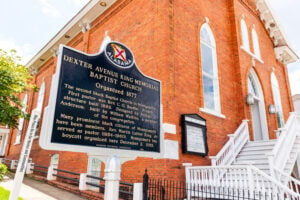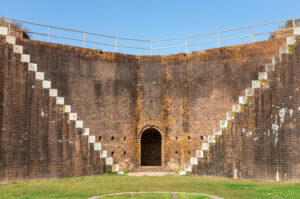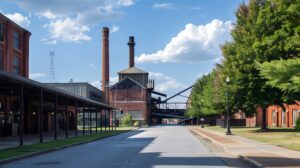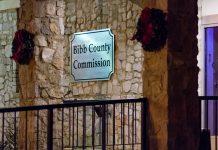Alabama, rich in culture and history, is home to numerous historical landmarks that tell the story of the American South—from Native American civilizations and the Civil War to the Civil Rights Movement and beyond. These sites provide a glimpse into the people, places, and events that have shaped not only the state but the nation. Here’s a look at some of Alabama’s most notable historical landmarks:
 Edmund Pettus Bridge – Selma. Perhaps one of the most iconic symbols of the Civil Rights Movement, the Edmund Pettus Bridge in Selma gained national attention on March 7, 1965—known as “Bloody Sunday.” Peaceful protesters marching to Montgomery were violently confronted by law enforcement. The event helped spur the passage of the Voting Rights Act of 1965. Today, the bridge stands as a powerful monument to justice and perseverance.
Edmund Pettus Bridge – Selma. Perhaps one of the most iconic symbols of the Civil Rights Movement, the Edmund Pettus Bridge in Selma gained national attention on March 7, 1965—known as “Bloody Sunday.” Peaceful protesters marching to Montgomery were violently confronted by law enforcement. The event helped spur the passage of the Voting Rights Act of 1965. Today, the bridge stands as a powerful monument to justice and perseverance.

USS Alabama Battleship Memorial Park – Mobile. The USS Alabama (BB-60), a World War II battleship, now rests in Mobile Bay as a memorial and museum. Visitors can tour the ship and explore other military exhibits, including a submarine, aircraft, and tanks. This landmark honors the courage and sacrifice of America’s military service members.
 Moundville Archaeological Park – Moundville. Located near Tuscaloosa, Moundville is one of the most important Native American archaeological sites in the United States. Built by the Mississippian culture between AD 1000 and 1450, the site includes large ceremonial mounds, a museum, and educational programs that explore the lives and traditions of the Native people who once thrived there.
Moundville Archaeological Park – Moundville. Located near Tuscaloosa, Moundville is one of the most important Native American archaeological sites in the United States. Built by the Mississippian culture between AD 1000 and 1450, the site includes large ceremonial mounds, a museum, and educational programs that explore the lives and traditions of the Native people who once thrived there.

Dexter Avenue King Memorial Baptist Church – Montgomery. This historic church was the pastoral home of Dr. Martin Luther King Jr. during the Montgomery Bus Boycott. It remains an active place of worship and a pivotal site in the Civil Rights Movement. Tours offer visitors insight into the church’s role in history and Dr. King’s early leadership.

Fort Morgan – Gulf Shores. Built in the early 1800s, Fort Morgan played a significant role during the Civil War, particularly in the Battle of Mobile Bay. The fort’s well-preserved structure and museum provide a fascinating look at coastal defense systems and military life in the 19th century.

Ivy Green – Tuscumbia. The birthplace of Helen Keller, Ivy Green is a cherished landmark that honors one of America’s most inspirational figures. Visitors can see the actual water pump where Helen made her breakthrough with teacher Anne Sullivan and learn about her life through personal artifacts and guided tours.

Old Cahawba – Orrville. Alabama’s first state capital, Old Cahawba is now a ghost town and archaeological site. Visitors can explore ruins, cemeteries, and trails while learning about the once-thriving community that played a vital role in early Alabama history.

Tuskegee Institute National Historic Site – Tuskegee. This site honors the legacy of Booker T. Washington and the Tuskegee Institute, now Tuskegee University. The campus includes the George Washington Carver Museum and the historic chapel, reflecting the impact of African American education and innovation.
 Sloss Furnaces – Birmingham. An important symbol of Alabama’s industrial heritage, Sloss Furnaces once produced iron for nearly a century. Today, it’s a National Historic Landmark offering tours, events, and insight into Birmingham’s rise as an industrial powerhouse.
Sloss Furnaces – Birmingham. An important symbol of Alabama’s industrial heritage, Sloss Furnaces once produced iron for nearly a century. Today, it’s a National Historic Landmark offering tours, events, and insight into Birmingham’s rise as an industrial powerhouse.

Boll Weevil Monument – Enterprise. A unique and quirky landmark, the Boll Weevil Monument commemorates a pest that devastated cotton crops in the early 20th century but led to agricultural diversification in the region. It’s the only monument in the world dedicated to an insect, symbolizing resilience and adaptation.
Alabama’s historical landmarks offer more than just sightseeing opportunities—they tell the stories of courage, struggle, innovation, and hope. Whether you’re a history enthusiast, a student, or simply curious, visiting these landmarks provides a deeper understanding of the state’s rich heritage and its profound impact on the nation.
So pack a map, bring your curiosity, and embark on a journey through Alabama’s remarkable past—you’ll find that history is never too far away.

















